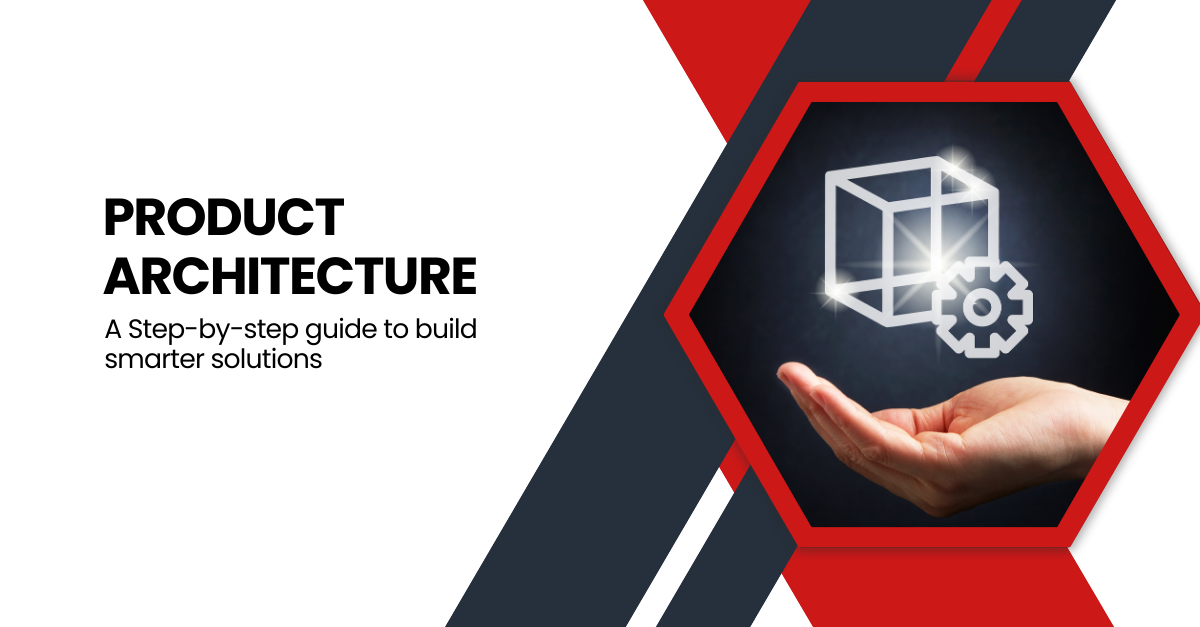Product Architecture: A step-by-step guide to build smarter solutions
Creating more imaginative solutions requires a well-thought-out Product Architecture. It serves as the blueprint, ensuring the product’s components align and function cohesively. Effective design begins with understanding Product Architecture. It’s the structural layout of a product, encompassing components, their functions, and how they interact. This clarity ensures streamlined development and reliable functionality.
Table of Contents
The foundation of Product Architecture
The Importance of Product Architecture lies in its ability to simplify complexities. It defines the structural relationships between components, ensuring efficiency and reducing errors during development. A robust design supports scalability and allows for easier upgrades over time.
Clear distinctions exist between Product Architecture and System Architecture. Product architecture focuses on a product’s internal structure and components. On the other hand, system architecture addresses the interactions between multiple systems and their environments. Both are critical but cater to different scopes of functionality.
A step-by-step guide to designing Product Architecture
- Define objectives and requirements: Identify the product’s purpose and the problems it solves. Specify the functional and non-functional requirements for a clear foundation.
- Break down components: Divide the product into smaller modules or components. Assign clear roles and ensure smooth communication between each element.
- Choose a framework: Select a suitable Product Architecture framework to support the project’s goals. Popular frameworks include layered architectures, event-driven models, and microservices-based approaches.
- Map interactions: Define how each module interacts with others. Use diagrams to represent the data flow and confirm seamless communication between modules.
- Prototype development: Prototyping tests the feasibility of your architecture. It highlights potential challenges and informs further improvements.
- Optimize and iterate: Gather feedback from prototypes and stakeholders. Refine the design to enhance usability, performance, and integration capabilities.
Examples of effective Product Architectures
Examples of practical product architecture are abundant in modern industries. For instance, smartphones integrate software and hardware modularly to deliver consistent performance. Similarly, electric vehicles use modular designs to optimize battery management and powertrain efficiency.
Practices for designing Product Architecture
- Prioritize modularity: A modular design allows components to function independently. This approach simplifies updates, replacements, and maintenance efforts.
- Focus on interoperability: Ensure compatibility between components using standardized protocols. Seamless interaction between modules prevents bottlenecks and enhances system efficiency.
- Plan for future growth: Design with flexibility in mind to accommodate future requirements. An adaptable architecture can save time and resources in the long run.
- Comprehensive documentation: Document the design process thoroughly. Clear records improve collaboration and help future teams understand the architecture.
The process of designing a Product Architecture involves careful planning and iterative improvements. You can create efficient, reliable products with attention to detail and adherence to best practices.
This guide outlines the essential steps for building smarter solutions, from understanding product architecture to implementing effective product architecture frameworks. By recognizing the Importance of Product Architecture, exploring Product Architecture examples, and distinguishing Product Architecture from System Architecture, businesses can establish robust foundations for innovation and long-term success.
Ready to build smarter solutions? Our team at Novas Arc is here to help you design innovative products with robust architecture. Reach out to take the first step toward creating efficient, scalable solutions that drive digital transformation!
FAQs
Q1. What is a product architecture example?
A smartphone is a great example of product architecture. It integrates hardware, software, and user interfaces into a cohesive design.
Q2. What is an architectural product?
An architectural product is a designed system or component that forms part of a product’s overall structure and functionality.
Q3. How do you write product architecture?
To write product architecture, outline objectives, break components into modules, define interactions, select a framework, and document thoroughly.
Q4. Is architecture better than product design?
Architecture and product design serve different purposes. Architecture focuses on structure and functionality, while product design emphasizes usability and aesthetics.
Author








